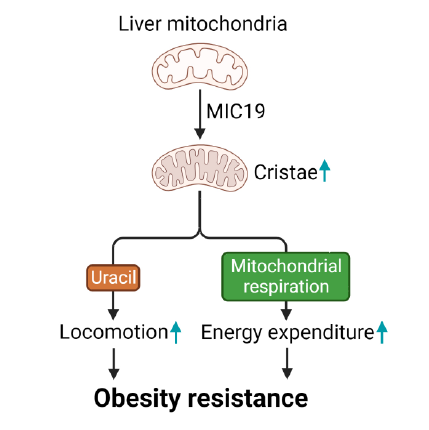
The liver responds to nutrient changes coordinating glucose and lipid energy metabolism. This response involves architectural remodeling of the mitochondrial organelle, which is crucial to maintain metabolic and bioenergetic homeostasis. However, what signals control cristae formation upon nutrient fluctuations and the impact on hepatic and whole-body energy metabolism is not well understood.
In this study, through proteomics analysis using different mice liver strains (in collaboration with the Gygi lab) we identified that fasting induces protein amounts of MIC19, which is a subunit of the MICOS cristae organizing complex. Expression of MIC19 in the liver causes cristae formation and enhanced mitochondrial respiration promoting energy expenditure and, surprisingly pedestrian locomotion. MIC19 causes walking locomotion through changes in redox status that increased activity of UPP2 through cysteine modifications, converting uridine to uracil. Uracil function as a signal, likely acting in the brain, to promote locomotion. Selective increases of mitochondrial cristae in liver are sufficient to control energy balance and walking activity providing beneficial effects on obesity and related complications.